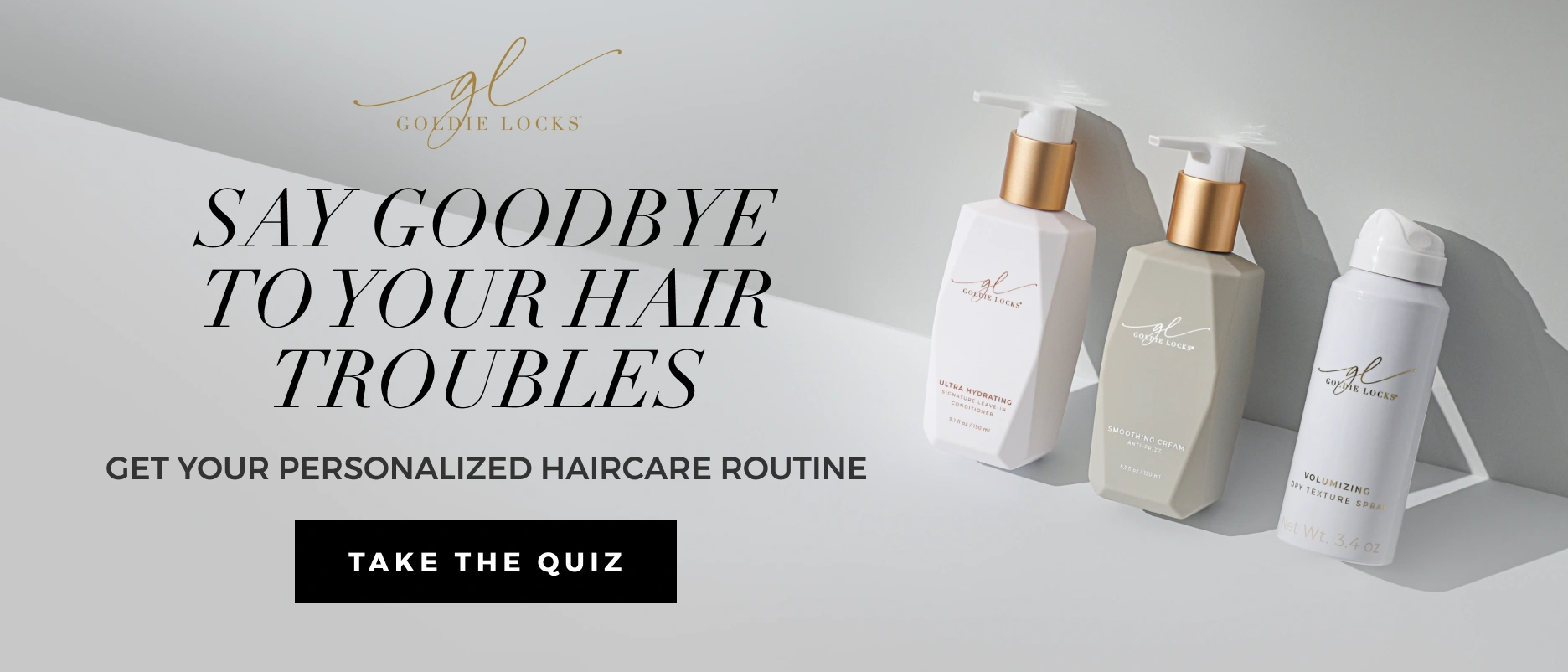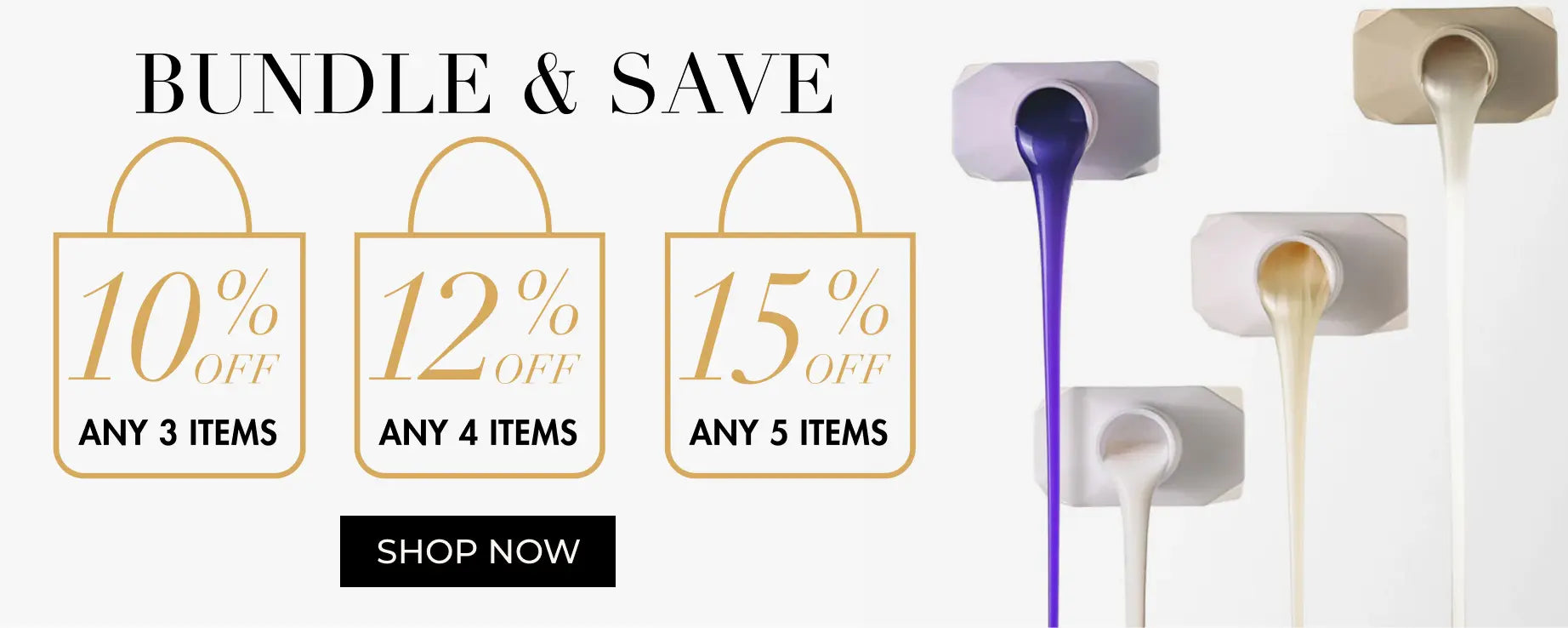Regularly cleaning your hairbrush is an essential part of a healthy hair care routine. If this is news to you, don’t worry, now’s the perfect time to start!
Hairbrushes collect product residue, dead skin cells, and natural scalp oils. If left uncleaned, that buildup gets transferred right back onto your freshly washed hair, dulling its vibrancy and cleanliness.
This guide is designed for all hair types and will walk you through how to properly care for your hairbrush, how often to clean it, and when it’s time to replace it, so you can keep both your brush and your hair in their best condition.
Types of Hair Brushes and Their Materials

Before diving into the cleaning process, it’s important to identify what your hairbrush is made of.
Regardless of its shape, whether round, paddle, or otherwise, the materials matter. Most brushes are made of plastic or wood/bamboo and feature bristles that can be plastic, metal, or boar hair.
For best results, always take the brush’s materials into account. Different types require different cleaning methods to avoid damage and get the most effective clean.
Why Different Brushes Need Different Cleaning Methods
Hair brushes are made with a variety of materials, like cushion pads, wooden handles, and ceramic barrels, and these differences affect how they should be cleaned.
Porous materials, such as wood and foam cushion pads, can absorb moisture, oils, and product buildup. These brushes require gentler, low-moisture cleaning methods and must be dried thoroughly to prevent damage.
Non-porous materials, like plastic, silicone, ceramic, and metal, don’t absorb as easily. They’re more durable, easier to clean, and can typically handle stronger cleansers and full rinsing without harm.
How Often Should You Clean Your Hair Brush?

Just like your hair, your hairbrush benefits from regular care, daily, weekly, and monthly. A brush that’s dirty, smelly, tangled, or coated in buildup can’t do its job effectively, so it’s important to remove trapped hair after each use.
A deeper clean every one to two weeks is usually enough, though this can vary depending on your hair type, how often you brush, and whether you’re using a lot of styling products.
The more frequently you use your brush, the more it collects hair, oils, residue, and grime, so regular maintenance keeps it (and your hair) in better shape.
What You’ll Need – Cleaning Supplies Checklist

Once you’ve gathered your hairbrush cleaning supplies, follow the guide below for the most effective way to clean your brushes.
Step-by-Step Guide to Cleaning Your Hair Brushes

Step 1 – Remove Hair and Buildup
Use your fingers to remove all hair from the brush. For stubborn, tangled strands, use tweezers or the end of a teasing brush to help loosen and pull them out, then use scissors to help you remove tangles more easily.
Step 2 – Prepare a Cleaning Solution
Fill a bowl with warm water and add a few drops of shampoo for a standard cleaning solution. For extra cleaning power, you can add baking soda to help dissolve stubborn buildup.
Pro Tip: Try mixing water with vinegar, or vinegar and baking soda. Vinegar helps break down the residue that creates that unsightly buildup at the base of the bristles.
Step 3 – Soak and Scrub
For synthetic brushes, submerge the bristles in the cleaning solution and soak for about 10 minutes to loosen clumps. Avoid soaking wooden brushes; instead, briefly dip the bristles, bristle-side down, into the water.
Use an old, clean toothbrush to scrub between the bristles and around the base. Dip the brush back into the water as needed. Use your fingers to gently slide any stubborn buildup up and off the bristles.
Step 4 – Wipe Down the Handle
While cleaning the bristles, wipe the handle with a towel to remove any sticky residue from hairspray or styling products. Use a cotton swab to clean grooves and crevices. Avoid soaking wooden handles, as excess moisture can damage them.
Step 5 – Rinse and Dry Properly
Rinse your brush thoroughly under running water to remove all soap and loosened debris. If your brush has a cushioned base, gently squeeze it to remove trapped water, this helps prevent bacteria or mold from developing.
Finally,
Expert Insight:
“Cleaning your hairbrushes is just as important as washing your hair.
Think about it, just like your hair collects product buildup, oils, and debris, so do your brushes. And if you’re not cleaning them regularly, all that gunk (including dead skin cells) gets transferred right back to your scalp.
That can lead to bacteria, irritation, and throw off your scalp’s natural balance.
Here’s my go-to method:
- Soak your brushes in hot water
- Add a clarifying shampoo to create a cleaning bath
- Use a small brush (like an old toothbrush or a brush-cleaning tool) to gently scrub out the buildup
Clean brushes = less buildup, less bacteria, and a healthier scalp
Don’t skip this step,it’s a small habit that makes a big difference.” – Erin Caltabiano
How to Disinfect Hair Brushes (Optional But Recommended)

While routine cleaning removes hair and product buildup, disinfection is especially important if:
- You’ve recently been ill
- You share your brush with others
- You’re trying to prevent lice
Natural disinfectants include:
- White vinegar
- Tea tree oil (naturally antibacterial)
- Baking soda
After washing your brush with shampoo, disinfect it by soaking it in a 1:1 solution of white vinegar and water for 10–15 minutes.
Note: Avoid soaking wooden or cushioned brushes for extended periods. Instead, spray the disinfectant directly onto the bristles or wipe them down with a damp cloth. Rinse lightly if needed, then dry the brush bristle-side down on a clean towel to air-dry completely.
How to Remove Sticky Buildup or Product Residue

To effectively remove sticky buildup or product residue from hairbrushes, use Goldie Locks® Clarifying Shampoo:
- Fill a bowl or sink with warm water and add a few pumps of Goldie Locks® Clarifying Shampoo.
- Add 1 teaspoon of baking soda for extra cleaning power (optional).
- Soak the brush, only submerge the bristle area, especially if the brush has a wooden handle or cushioned base.
- Use an old toothbrush to scrub between the bristles and along the base where residue tends to collect.
- Rinse thoroughly under warm water.
- Let the brush air dry bristle-side down on a clean towel.
For more stubborn residue, you can carefully use an alcohol-based solution only on plastic or metal brushes:
- Dampen a cotton ball or soft cloth with 70% isopropyl alcohol.
- Wipe the bristles and base, focusing on sticky or heavily coated areas.
- Let it sit for about a minute to help break down buildup.
- Scrub gently with an old toothbrush.
- Rinse well with warm water and dry as usual.
Both methods are key to maintaining your brush’s hygiene, ensuring it continues to perform effectively and keeping your hair cleaner in the process.
Expert Insight:
“Clients are often shocked when I tell them to clean their brushes more often, almost weekly! I recommend removing hair first, soaking the brush in warm water with a bit of clarifying shampoo, and using a toothbrush to scrub between bristles. Let it air dry upside down. A clean brush = cleaner scalp = healthier hair!” – Shelby Sells
How to Maintain Clean Brushes Longer

Maintenance
- After each use, remove any hair from the bristles using your fingers, a comb, or a brush cleaning tool. Then tap the brush lightly against the sink to shake loose any dust, lint, or product residue.
- Once a week, give your brush a more thorough clean: remove all hair from the bristles, soak the brush in warm water mixed with a few drops of shampoo, scrub between the bristles and around the base, rinse thoroughly, and let it air dry bristle-side down on a clean towel.
Best Storage Practices
- Store your brush in a dry, well-ventilated area, upright with bristles facing up, lying flat on a clean surface, or inside a closed drawer or container if dust is an issue.
- Avoid keeping brushes in humid environments like poorly ventilated bathrooms, as moisture can lead to mold, mildew, or bristle damage.
- Never store your brush in a bag or drawer while it’s still damp, especially without airflow.
Tips to Minimize Product Residue on Your Brush
- Allow styling products to fully dry before brushing, especially gels, sprays, or creams.
- Opt for lightweight or non-sticky products when possible.
- Wash your hair regularly to minimize oil and product transfer to the brush.
- If you use heavy styling products often, rotate between multiple brushes to reduce buildup on any one tool.
When Should You Replace Your Hair Brush?

Most hairbrushes can last for years with proper care and regular cleaning. But even with the best maintenance, every brush has a lifespan, and eventually it will need to be replaced.
It’s time to invest in a new brush when the bristles start to fray, stiffen, or fall out, the handle becomes loose, or the brush looks worn out, discolored, or just no longer feels effective.
If your brush isn’t detangling or styling your hair the way it used to, that’s another clear sign it’s time for a replacement.
FAQs About Cleaning Hair Brushes
What happens if you don’t clean your hairbrush?
If you don’t clean your hairbrush regularly, it can affect both the brush’s performance and the health of your hair and scalp.
Can I use dish soap?
It’s best to avoid harsh dish soaps, as they can damage the brush and cause the bristles to weaken or break.
Is it safe to clean electric or heated brushes?
Yes, but with caution. You should never submerge electric or heated brushes in water or allow moisture near the cord, buttons or vents. To clean an electric brush:
- Unplug the brush and let it cool completely before cleaning.
- Remove hair from the bristles using your fingers or a small tool.
- Wipe down the surface with a soft cloth or microfiber towel.
- Use cotton swabs for cleaning between bristles or in small crevices.
- Dry thoroughly with a clean towel and allow the brush to air dry for at least an hour before plugging it back in.
How do I clean a brush with lint or dust buildup?
Remove any hair with your fingers or a comb. Use a cotton swab or toothpick to loosen lint and dust trapped at the base. Then soak the brush in warm water mixed with a few drops of shampoo. Scrub gently, rinse thoroughly, and let the brush air dry bristle-side down.
What’s the best way to clean travel-sized brushes?
Travel-sized brushes can be cleaned using the same methods as regular brushes. However, if the brush is foldable, vented, or has a cushioned base, avoid soaking it. Instead, dip a soft cloth or toothbrush in your cleaning solution and scrub the bristles and base gently by hand. Rinse lightly and let it air dry completely before storing.
Final Thoughts
Keeping your hairbrush clean goes a long way in maintaining a healthy scalp and shiny, vibrant hair. Making it a habit to remove trapped hair, lint, and product buildup can help reduce irritation, support healthier hair growth, and extend the life of your brush.
With a simple, consistent cleaning routine, your hairbrush will stay clean, effective, and gentle on your hair, every time you use it.




